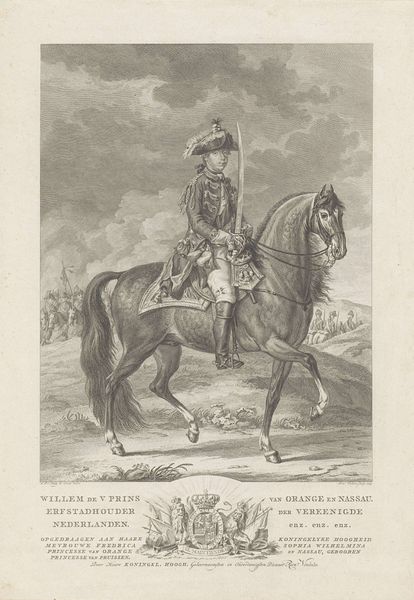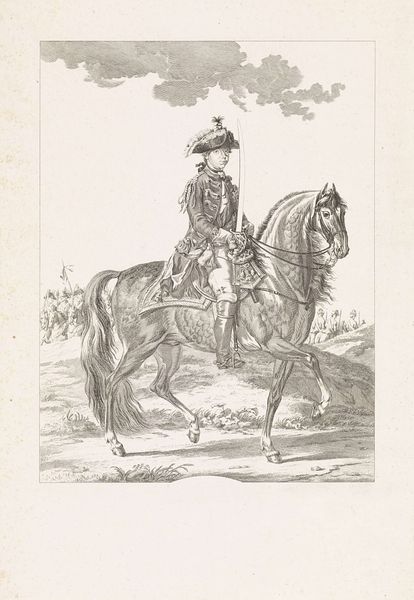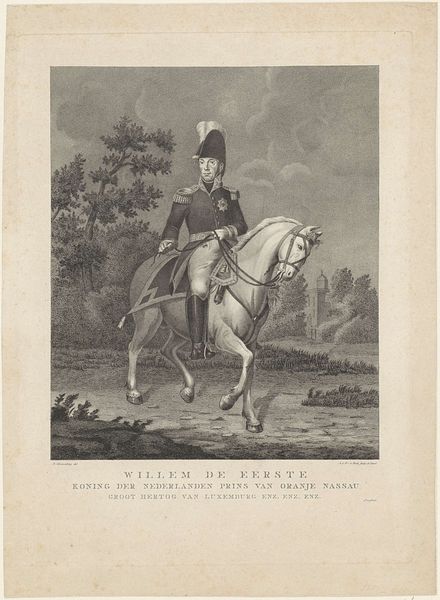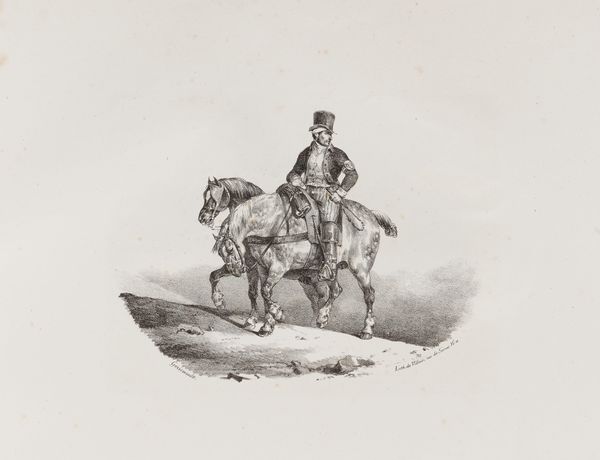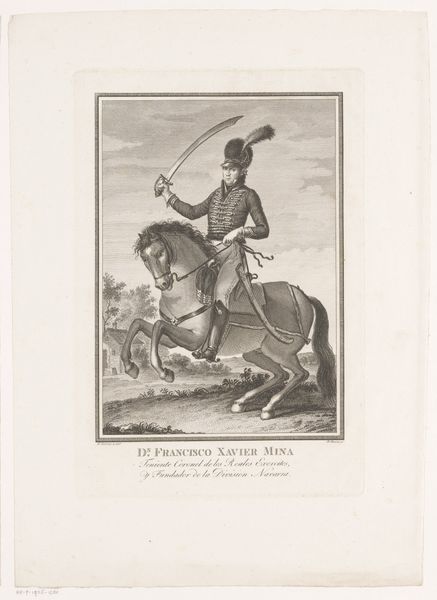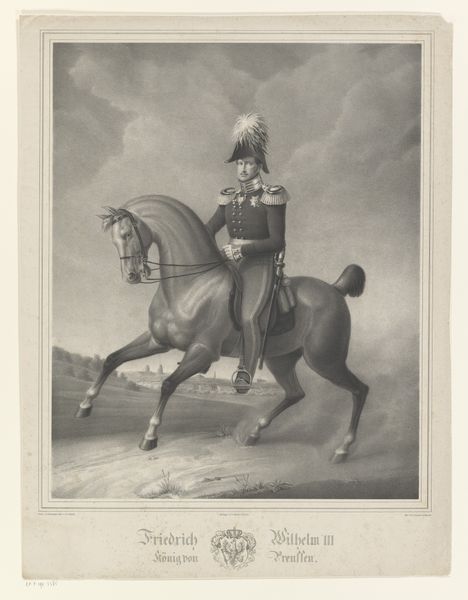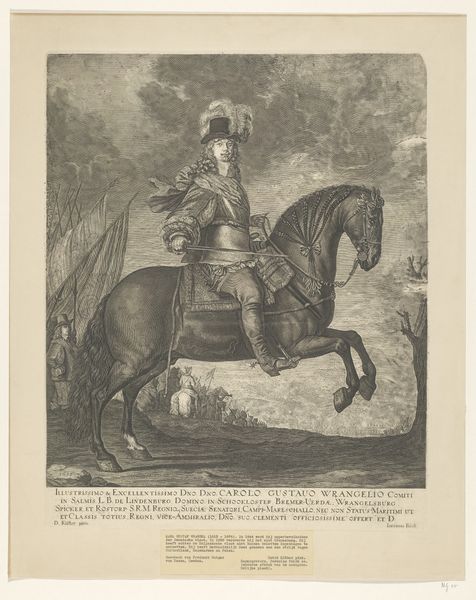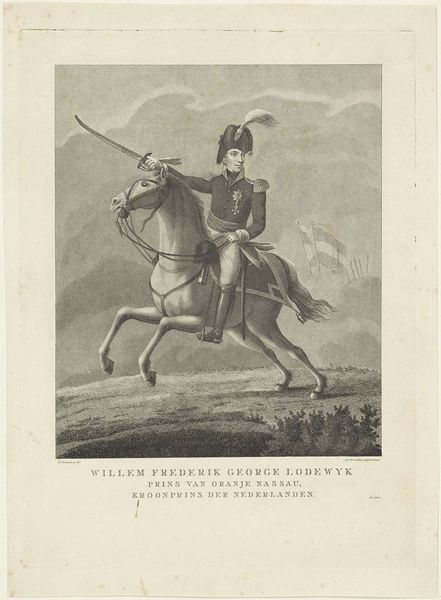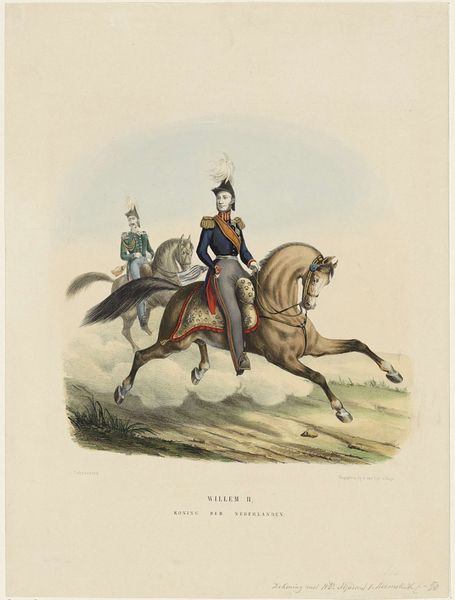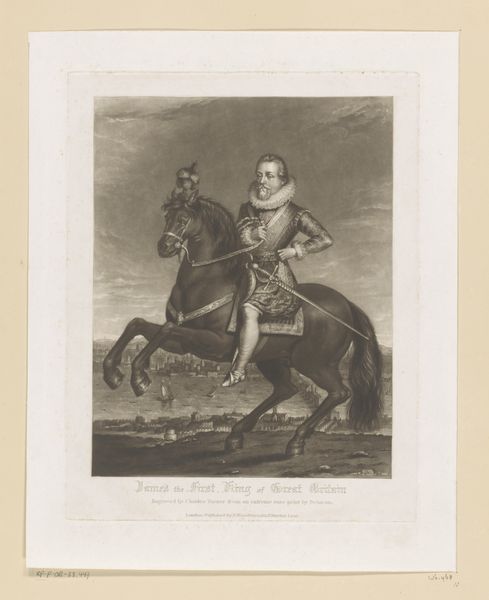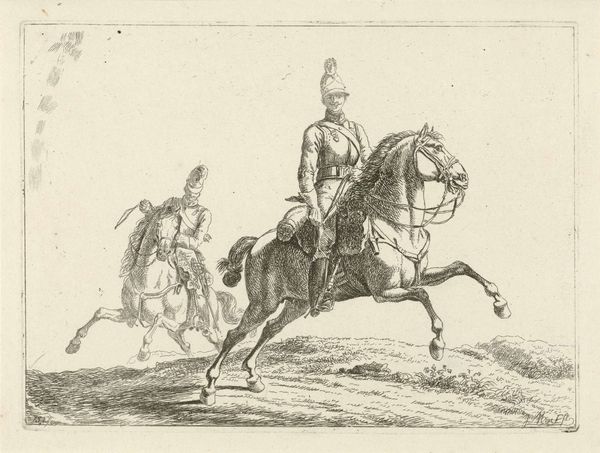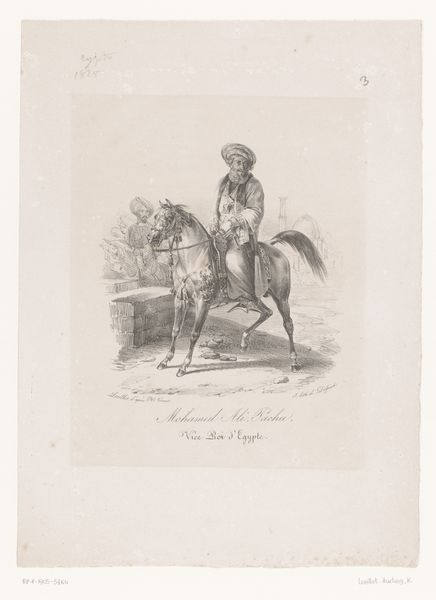
print, engraving
# print
#
old engraving style
#
landscape
#
genre-painting
#
history-painting
#
academic-art
#
engraving
#
realism
Dimensions: height 318 mm, width 260 mm
Copyright: Rijks Museum: Open Domain
Editor: This print, "Equestrian Portrait of William II, King of the Netherlands," made between 1822 and 1845, captures the Prince of Orange on horseback. It’s fascinating how much detail the anonymous artist was able to render using only engraving. What catches your eye about this work? Curator: I’m drawn to the materials used to create this image. This is an engraving, a medium which requires immense skill and labor. The production process itself becomes a key point of consideration. Think about the socioeconomic context of the time – who had access to printmaking? Who was consuming these images and how might that consumption reflect larger social hierarchies? Editor: So you're saying the choice of printmaking over, say, painting is significant in itself? Curator: Exactly. Printmaking made images accessible to a broader audience, yet the creation was still controlled by skilled artisans and, often, commissioned by the elite. The dissemination of royal portraits, reproduced en masse, becomes an interesting intersection of power, labor, and visual culture. What about the image itself? Does the prince seem accessible or powerful? Editor: Definitely powerful, but somewhat…distant? Almost manufactured. Thinking about it now, it seems this work shows how printed materials help produce and sustain particular ideals, and it does hint at the intense labor involved in its making. Curator: Precisely! By focusing on the means of production, the very materiality of the print, we can uncover a richer understanding of the historical and social forces at play in this depiction of royalty. Editor: That really changes how I see the piece; I was focusing solely on the portrait itself. Considering its materiality opens up a whole new perspective on art’s relationship to labor and social class.
Comments
No comments
Be the first to comment and join the conversation on the ultimate creative platform.
